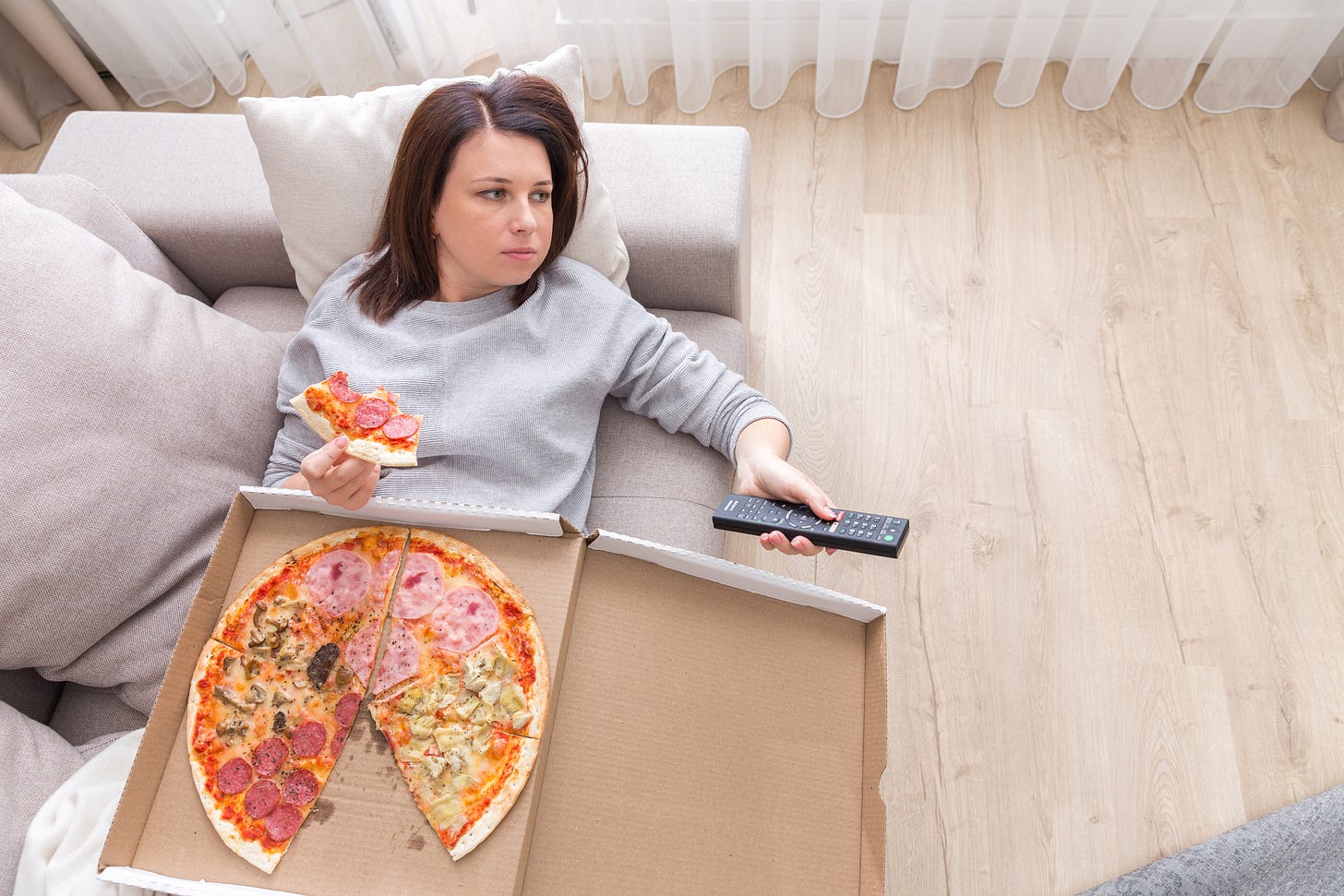A Shocking Source of Your Cravings
Your gut microbiota brazenly gives you cravings to get what it wants.
"When you kinda want abs, but you really want 17 donuts and 3 large pizzas." – Anonymous
I have carefully honed my taste buds for years to appreciate the finer things in life like donuts and pizza. OK, I don't actually remember choosing those as primary food groups, but I must have, right? Scientists, however, point out that our gut microbes — known as our microbiota — play a major vote in what we crave. How is that possible?
If you're happy with your health and you have a craving for kale, you can skip this article. But if you're like the two-thirds of Americans who are trying to lose weight and craving anything with chocolate, cheese, or bacon, this post is for you.
Fly Studies
Microbiota stories often start with flies. That makes sense because flies are easy to work with and they have a simple — and tiny — microbiota. In fact, you can experiment on flies that have only a handful of different bacterial species, a radical improvement over studying the thousands of species jostling in our impressive human gut.
One thing we know about flies is that they like yeast for its protein. It's like filet mignon to them, and they particularly like it when they have been denied protein. So it was interesting to Carlo Ribeiro and his colleagues when they found hungry flies that shunned yeast. These flies turned their tiny fly noses up, even though they needed the protein from the yeast. They discovered that these hungry flies had specific microbes that changed their appetite and altered their cravings, even though it was potentially bad for their health.
Cravings, it turns out, may be better for gut microbes than for their hosts. At least for flies.
Mouse Studies
After flies, the next best research subjects are mice, and here we have a creepy story. Normally, mice wisely scurry off when they smell cat urine, but there's a parasite called toxoplasma which alters that behavior. Mice infected with toxoplasma actually get turned on by cat pee: They crave it. As a consequence, they often end up as lunch for a cat, which is nourishing for the cat, essential to the life cycle of toxoplasma, but quite unfortunate for the mouse.
So, right off the bat, mouse studies demonstrate that cravings established by microbes can lead to a swift death. I think we can all agree that this is worse than following the scent of warm chocolate chip cookies, which may kill you, but slowly.
As another example, germ-free mice — which have no gut microbes — have unusual taste receptors on their tongues. When they are given a microbiota, those receptors change, and the mice change their food preferences. So, for both flies and mice, microbes affect food choices.
Humans Too?
Gastric-bypass patients offer a great window into microbial cravings. After a bypass, the microbiota undergoes a major shift. Along with that comes a big change in cravings. People who once kept Snickers in every pocket and drawer may suddenly stop craving sweets. They lose their taste for fatty foods. Amazingly, researchers now suspect that at least some of the success of bypass surgery is due to these changes in cravings, not the decrease in stomach volume.
There’s more. Pregnancy brings about major changes in the mother's body. The hormonal shifts that drive pregnancy affect the composition of the mother’s microbiota. Vaginal microbes start to favor Lactobacillus, which will provide a beneficial anointment when the baby is born. Gut microbes are also affected and different cravings take over. Pregnancy, of course, is famous for crazy cravings. They are often completely different from the mother's normal preferences, and gut microbes may drive some of those behaviors.
So flies, mice, and humans all have manipulative microbes that can affect their eating behavior. That's more than a little humbling. Humans have natural cravings for high-calorie food (we have to eat), but our gut microbes can take that to a whole new level.
What can we do about this microbial hijacking of our taste buds? Next week we’ll see how microbes manage to pull our chains so effectively and how we can take back control.
References
Corrales-Carvajal, Verónica María, Aldo A Faisal, and Carlos Ribeiro. “Internal States Drive Nutrient Homeostasis by Modulating Exploration-Exploitation Trade-Off.” Edited by Iain D Couzin. ELife 5 (October 22, 2016): e19920.
Behary, Preeshila, and Alexander D. Miras. “Food Preferences and Underlying Mechanisms after Bariatric Surgery.” The Proceedings of the Nutrition Society 74, no. 4 (November 2015): 419–25.
Alcock, Joe, Carlo C Maley, and C Athena Aktipis. “Is Eating Behavior Manipulated by the Gastrointestinal Microbiota? Evolutionary Pressures and Potential Mechanisms.” Bioessays 36, no. 10 (October 2014): 940–49.


